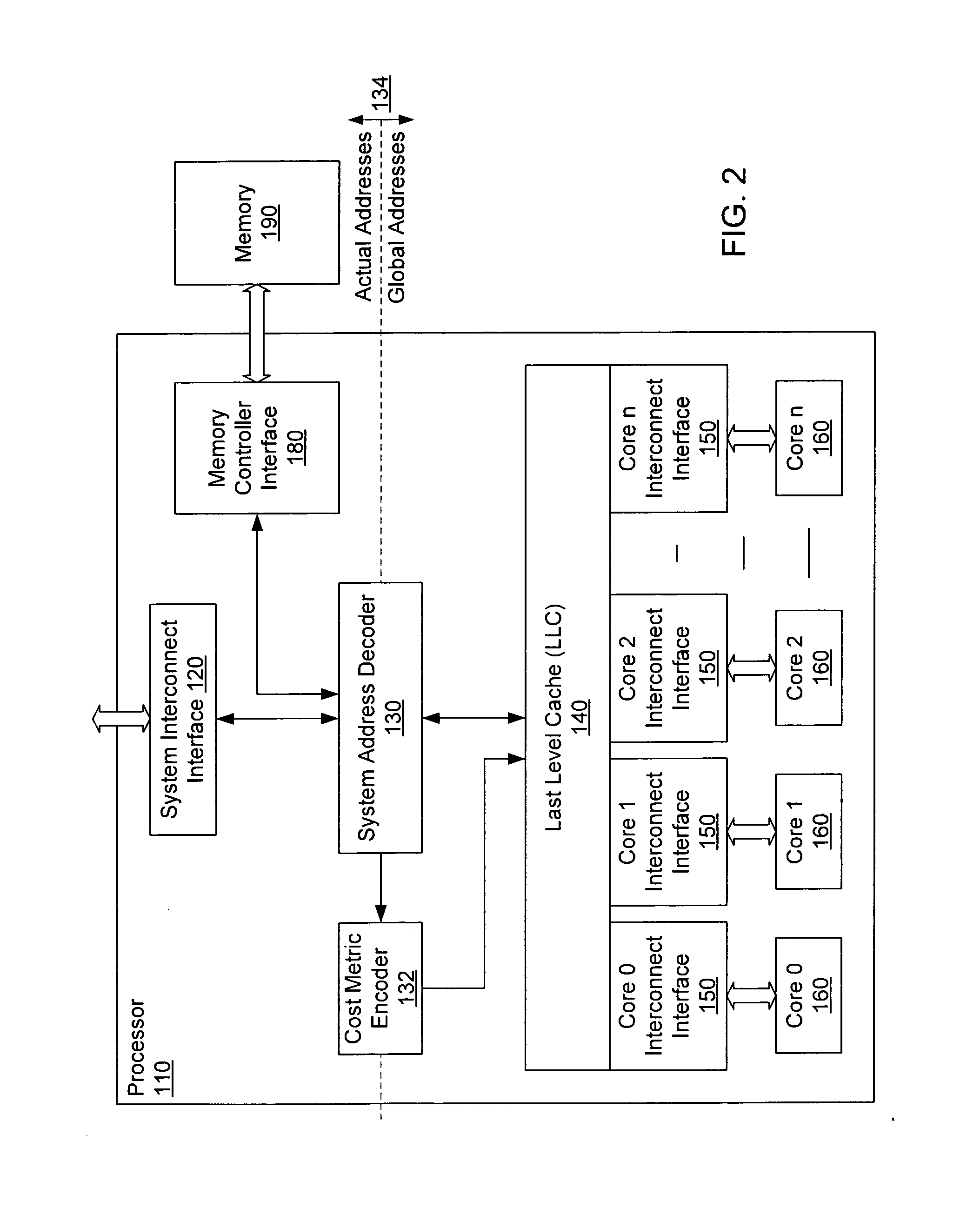Home node aware replacement policy for caches in a multiprocessor system
a multi-processor system and cache technology, applied in the direction of memory architecture accessing/allocation, instruments, computing, etc., can solve the problems of “non-uniform” scheme, memory bus can become serious bottleneck, and consume processor cycles
- Summary
- Abstract
- Description
- Claims
- Application Information
AI Technical Summary
Problems solved by technology
Method used
Image
Examples
Embodiment Construction
[0017] In NUMA systems, there is a significant time-cost difference between access to local memory and access to memory on a different processor (as much as 50% lower). On-die latencies can be continuously improved with process improvements. However, system interconnect latencies improve at a much slower rate. This contributes to a widening gap between local memory latencies and remote memory latencies.
[0018] Current processor cache replacement policies do not take the cost of an incorrect replacement into account, since the cost is treated as uniform across all address space. An “incorrect” replacement is a replacement that causes a miss almost instantaneously. To improve overall performance in an asymmetric-cost environment, embodiments of the present invention account for this non-uniform cache-entry replacement cost and are implemented with little overhead over conventional cache replacement policies. Processor caches are biased to favor replacement of entries that belong to th...
PUM
 Login to View More
Login to View More Abstract
Description
Claims
Application Information
 Login to View More
Login to View More - R&D
- Intellectual Property
- Life Sciences
- Materials
- Tech Scout
- Unparalleled Data Quality
- Higher Quality Content
- 60% Fewer Hallucinations
Browse by: Latest US Patents, China's latest patents, Technical Efficacy Thesaurus, Application Domain, Technology Topic, Popular Technical Reports.
© 2025 PatSnap. All rights reserved.Legal|Privacy policy|Modern Slavery Act Transparency Statement|Sitemap|About US| Contact US: help@patsnap.com



